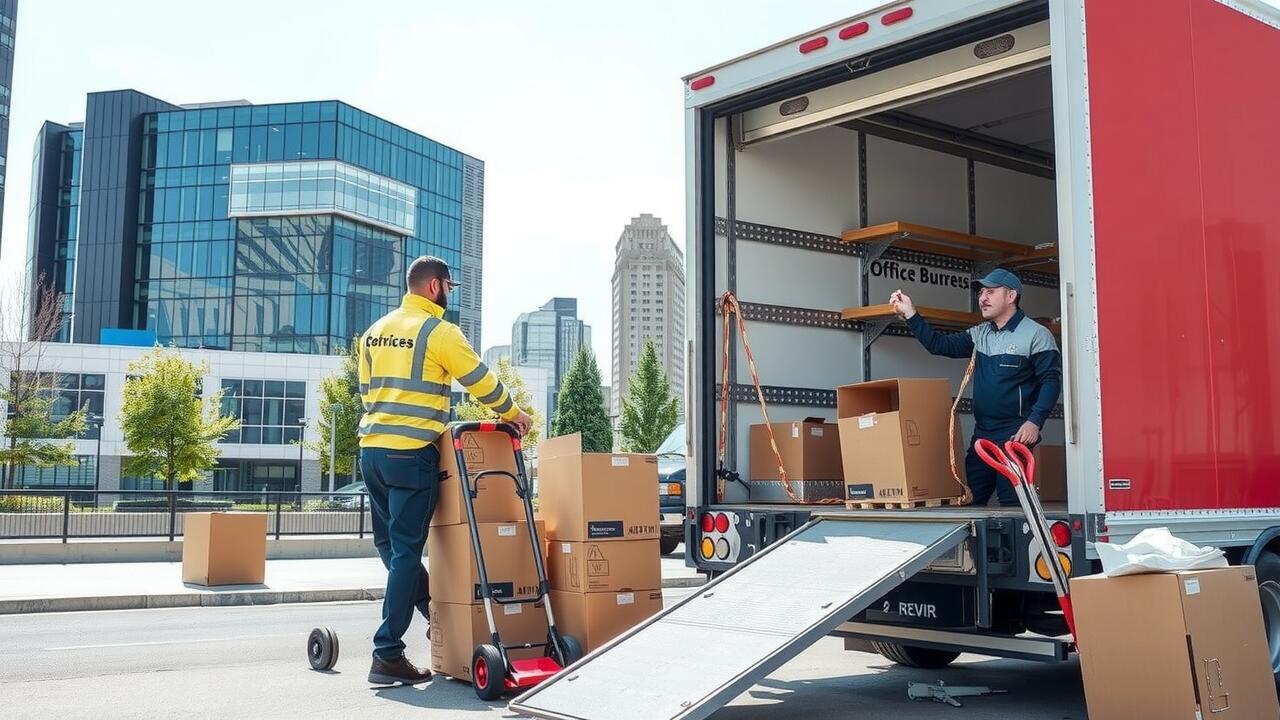
Table Of Contents
Planning for Business Continuity
Planning for business continuity during a commercial move involves thorough preparation to minimize disruptions. Companies in Longwood, Bethesda can benefit from creating a detailed timeline that outlines each phase of the relocation process. This scheduling should take into account the current operational commitments while allowing for a seamless transition to the new space. Engaging with a professional moving service that specializes in Longwood, Bethesda commercial moving can ease the logistics burden, ensuring that essential functions remain operational throughout the move.
Establishing a strong communication plan is equally important in maintaining business continuity. Informing clients, vendors, and employees about the move well in advance helps manage expectations and prevents any potential confusion. Providing clear timelines and updates can foster a sense of stability among staff as they prepare for the transition. Ensuring that all employees are aware of how the move impacts their roles will further contribute to a smooth process and uphold productivity during the transition period.
Minimizing Downtime During the Move
When planning a commercial move, minimizing downtime is crucial for maintaining business operations and customer satisfaction. One effective strategy is to create a detailed timeline that outlines each step of the moving process. This timeline should include key milestones such as packing, transport, and setup in the new location. Ensuring that all employees are aware of this timeline can help streamline operations and reduce potential disruptions. Engaging a professional moving service like Longwood, Bethesda Commercial Moving can further enhance efficiency by leveraging their experience and resources during critical transition moments.
Another important aspect of minimizing downtime is to prioritize the relocation of essential equipment and technology. Identify which items are crucial for daily operations and schedule their movement accordingly. Implementing a phased approach can allow certain departments to continue functioning while others migrate to the new space. Coordination with IT professionals before the move can ensure that systems are ready to go as soon as the team arrives at the new location. This proactive planning reduces the likelihood of delays, allowing for a smoother transition and quicker resumption of normal business activities.
Communicating with Employees
Effective communication is essential when planning a commercial move in Longwood. Keeping employees informed about the move's timeline and logistics helps reduce uncertainty. Regular updates through meetings or email announcements encourage team members to ask questions and express their concerns. Providing clear information about what to expect allows everyone to prepare mentally and logistically for the transition.
During a move, it's important to address any potential disruptions to workflow. Employees should be aware of how the move will affect their daily activities and responsibilities. Offering support, such as flexible schedules or resources for moving personal items, can help ease the transition. By fostering an environment of open dialogue, employees feel valued and involved in the process of Longwood, Bethesda Commercial Moving.
Preparing Staff for the Transition
To ensure a smooth transition during a commercial move, it's essential to prepare staff well in advance. Begin by discussing the upcoming move with employees, emphasizing the reasons behind the relocation and how it will benefit the company. Engaging with staff and addressing any concerns can alleviate anxiety and promote a positive outlook toward the change. Regular updates can help maintain transparency, fostering a sense of involvement and ownership among employees.
Training sessions can be beneficial as the move date approaches. Employees should be informed about new workspace layouts, equipment changes, and any shifts in operational procedures. Providing detailed information on what to expect can help them adjust more easily. Collaborating with a professional moving company like Longwood, Bethesda Commercial Moving can streamline these preparations, ensuring that your staff feels equipped and ready for their new environment.
Handling IT and Equipment Logistics
Managing IT and equipment logistics is critical to the success of any commercial move. In Longwood, Bethesda Commercial Moving can assist businesses in mapping out detailed plans for transporting computers, servers, and other essential equipment. It is essential to assess the condition of all technology prior to the move, as this will inform decisions on replacement or upgrades. Proper labeling and organization of cables and devices can prevent confusion during reinstallation.
Coordination with an IT team is crucial to ensuring that all systems are operational as quickly as possible after the relocation. Businesses should prepare to create a checklist that outlines each step of the setup process. This checklist should include tasks such as connecting hardware, installing software, and testing network connections. By proactively addressing these logistics, companies can minimize disruptions and ensure a smoother transition into their new space.
Coordinating the Setup of Technology
When planning a commercial move in Longwood, Bethesda Commercial Moving can greatly assist in coordinating the setup of technology. It is vital to establish a clear timeline for when the technology will be installed and tested. Collaborating with IT specialists ensures that the necessary infrastructure is in place before the move. This preparation involves determining the layout of the new space, identifying power sources, and ensuring high-speed internet access. By addressing these elements early, businesses minimize the potential for delays on moving day.
Additionally, having a dedicated team to handle the logistics of technology setup can streamline the process. This team should be responsible for labeling equipment, managing sensitive data, and organizing the connection of devices. Thorough documentation of the existing systems plays a crucial role in ensuring a smooth transition. Engaging with Longwood, Bethesda Commercial Moving can also provide additional resources and expertise, further enhancing the efficiency of the technology setup during the move.
FAQS
What are the key factors to consider when planning a commercial move in Longwood?
Key factors include business continuity, minimizing downtime, effective communication with employees, and handling IT and equipment logistics.
How can I minimize downtime during my commercial move?
To minimize downtime, create a detailed moving plan, schedule the move during off-peak hours, and ensure that all logistics are organized in advance.
Why is communication with employees important during a commercial move?
Communication is important to keep employees informed, address their concerns, and ensure they are prepared for the transition, which helps maintain morale and productivity.
What steps should I take to prepare staff for the transition?
Steps include holding informational meetings, providing updates throughout the process, assigning roles and responsibilities, and offering support resources to ease the transition.
How should I coordinate the setup of technology and equipment during a commercial move?
Coordinate the setup by creating an inventory of all technology and equipment, consulting with IT professionals, and planning the layout of the new space to ensure everything is operational as soon as possible.

